Below lists 20 of the top tips for Conducting your business ventures in Japan we’ll detail each one in the following article:
- Prepare your business cards ahead of time.
- Practise introducing yourself conservatively in Japanese.
- Pack and wear proper attire when conducting business in Japan.
- Pack easy-to-remove footwear.
- Learn about appropriate footwear etiquette in Japan.
- Learn why individuals cover their faces in Japan.
- Prepare your presentation.
- Prepare to arrive 10 minutes early.
- Be prepared with transportation to your meeting.
- Is Facebook the next LinkedIn in Japan?
- Addressing people correctly in Japanese
- Plan Roles Ahead of Time and Stick to Them
- Your pitch’s timing is just as essential as the pitch itself.
- Trim down your presentation to ensure it does not get lost in translation.
- The importance of group solidarity in Japan cannot be overstated.
- Remember, when the meeting is over, the actual work starts.
- Get some karaoke practice.
- Follow up.
- Remember that privacy is valued.
- Set aside some time for yourself.
Continue reading to discover more on our top 20 tips on conducting business etiquette in Japan.

Things to Consider Before You Leave for Your Business Trip in Japan
Travelling can be a stressful task, especially for business rather than pleasure. Preparing yourself before your trip can help make a huge difference in organization and stress levels in the days before your international business trip.
Before leaving for your business trip to Japan, consider including preparing your Business Cards Ahead of Time and learning how to introduce yourself in Japanese conservatively.

Preparing your Business Cards Ahead of Time
The way you introduce yourself to potential Japanese business partners has a huge influence on the outcome of any potential future partnership. Make business cards specifically for your trip to Japan before you go.
In Japan, meishi, or name cards, are regularly used and exchanged at any gathering with many people. Even if you’re simply traveling on a three-day business trip, you’ll need several dozen or hundreds of business cards to attend a trade show or other events.
The design and information on the card provide a first impression of your attention to detail and concern for your company.

What is the standard size of a Japanese business card?
A standard size Japanese business card is 2.17 inches x 3.58 inches. While sizes may vary, this is the most common size, which differs from the cards generally found in the West.
When you visit Japan, you will have no trouble finding cases made expressly for your cards’ secure and convenient storage.
Many cases may be found at the airport or at retailers like Loft and Tokyu Hands.
In Japan, how do you exchange business cards?
In addition to the card’s appearance, how it is presented is essential. Present the card with both hands. Have your information facing the person to whom you’re delivering the card.
Handing a business card with one hand or holding them between your index and middle finger is considered disrespectful.
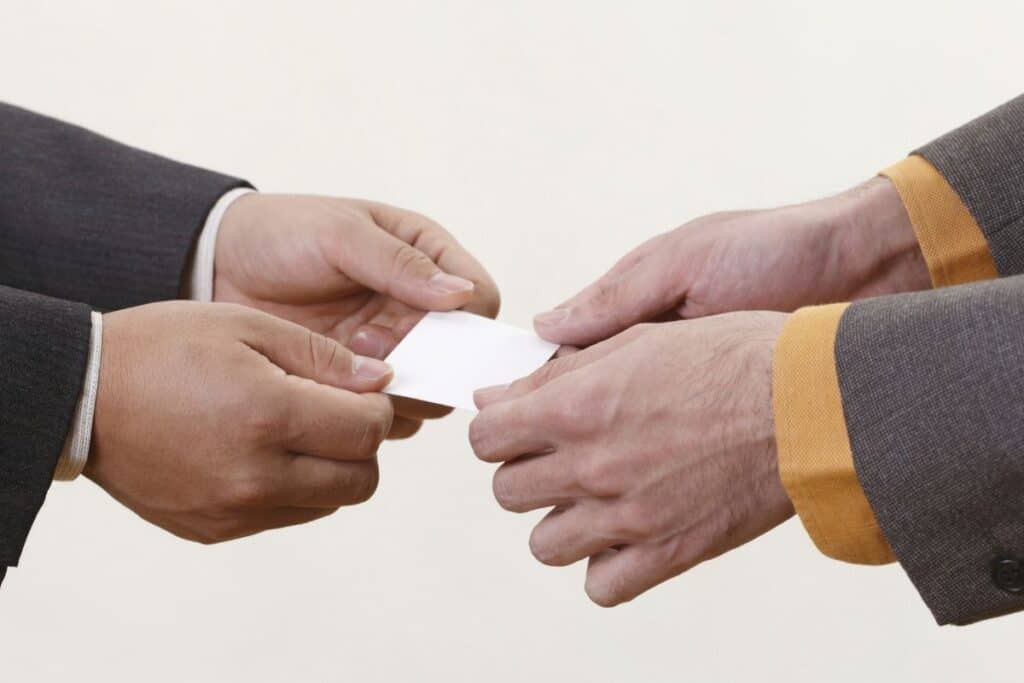
Practice Introducing Yourself Conservatively in Japanese.
It is acceptable to shake hands in Japan. Avoid a long shake or a shake with two hands. Cupping and gripping the other person’s hand too firmly might be seen as a sign of disrespect.
Bowing is also an option. When you mention your name and position in the firm, you should bow at a 45-degree angle. The other individual is likely to follow suit.
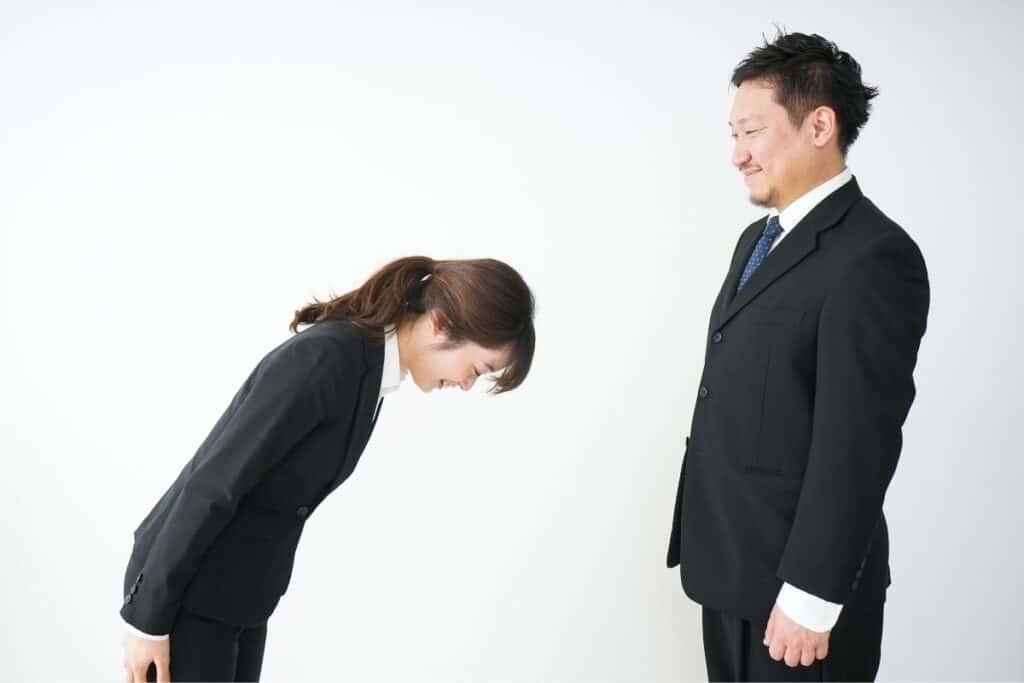
Men should bend with their arms along their torso’s sides, while ladies may combine their hands in front of their lower abdomen.
It’s not appropriate to bow and shake hands at the same moment.
Proper Business Attire to Wear in Japan
In Japan, people will frequently prefer to wear dress shirts and blazers, or elegant suit-jackets, especially for initial meetings.
Men will often dress in a dark suit with a basic white or blue shirt, necktie, and polished black shoes.
On the other hand, women dress conservatively in conservative dresses or suits, with a dark, knee-length skirt and black shoes with low heels.
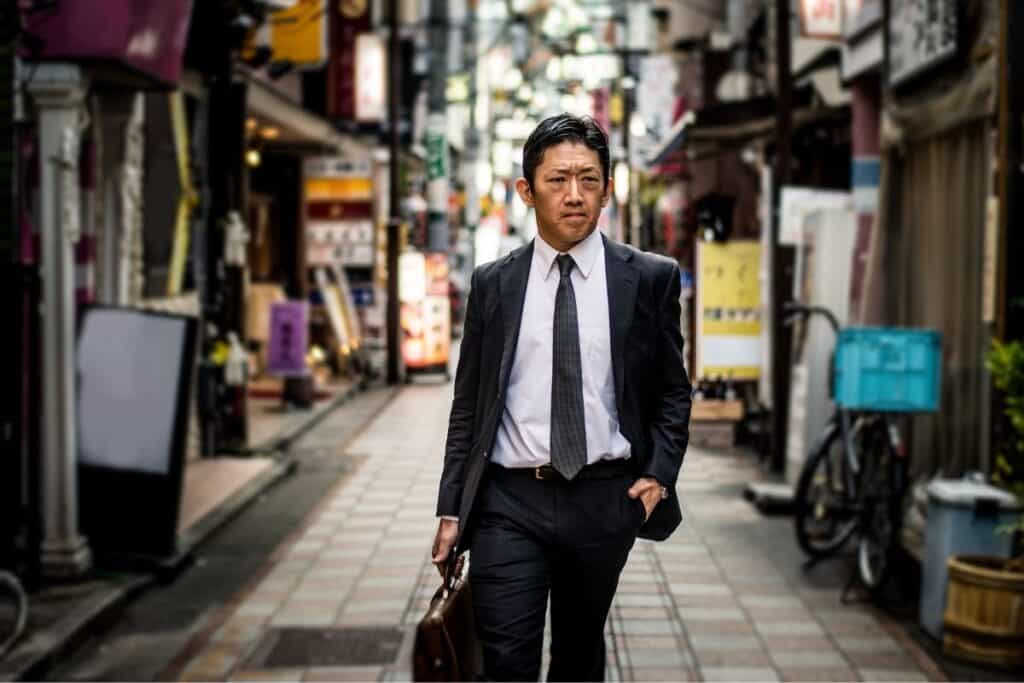
Pack easy-to-remove footwear.
Taking off one’s shoes indoors originated in Japanese homes. Shoes are typically removed as a sign of respect and to keep the floor clean.
Learn about proper footwear etiquette in Japan.
It is customary to leave your shoes at the entrance after removing them. It will also make slipping them back on when you depart easier. In general, most offices will not require the removal of footwear.
However, in rare cases, you might change into slippers. Remove your slippers before walking onto tatami mats if you’re entering a room with them.
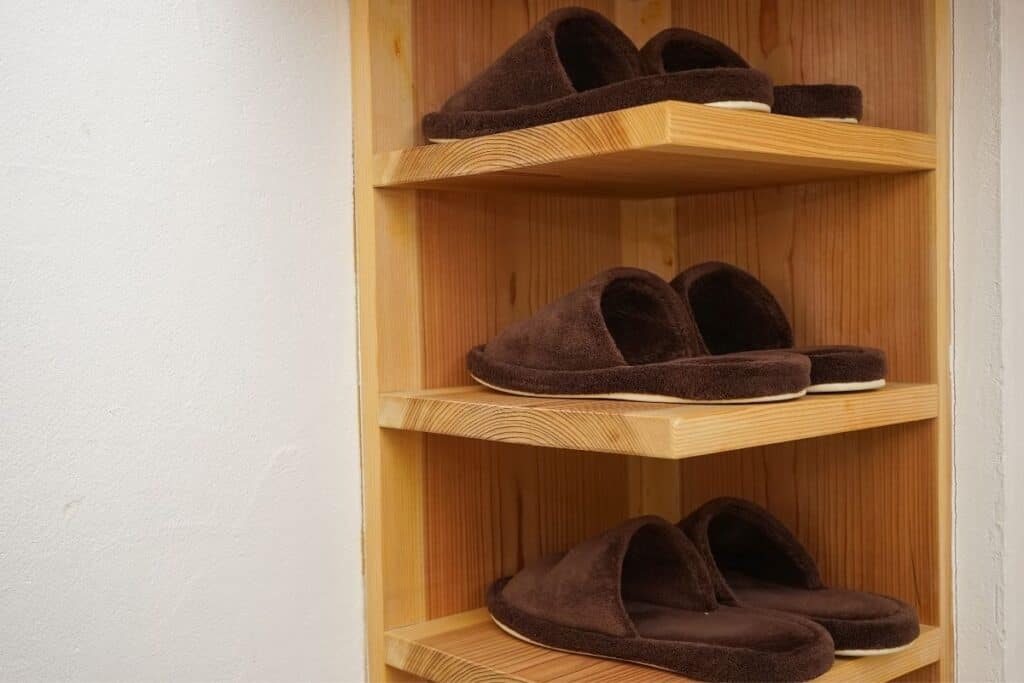
Learn why individuals cover their faces in Japan.
People in Japan use masks daily for various reasons, including care for others. For example, wearing a mask while having a cold prevents germs from spreading.
Masks are also worn to protect against contracting a cold or virus during hay fever season and disguise a pimple or when they don’t feel like putting on make-up.
In the current era of covid mask-wearing to most Japanese is very common and so this practice is nothing new to Japanese society.
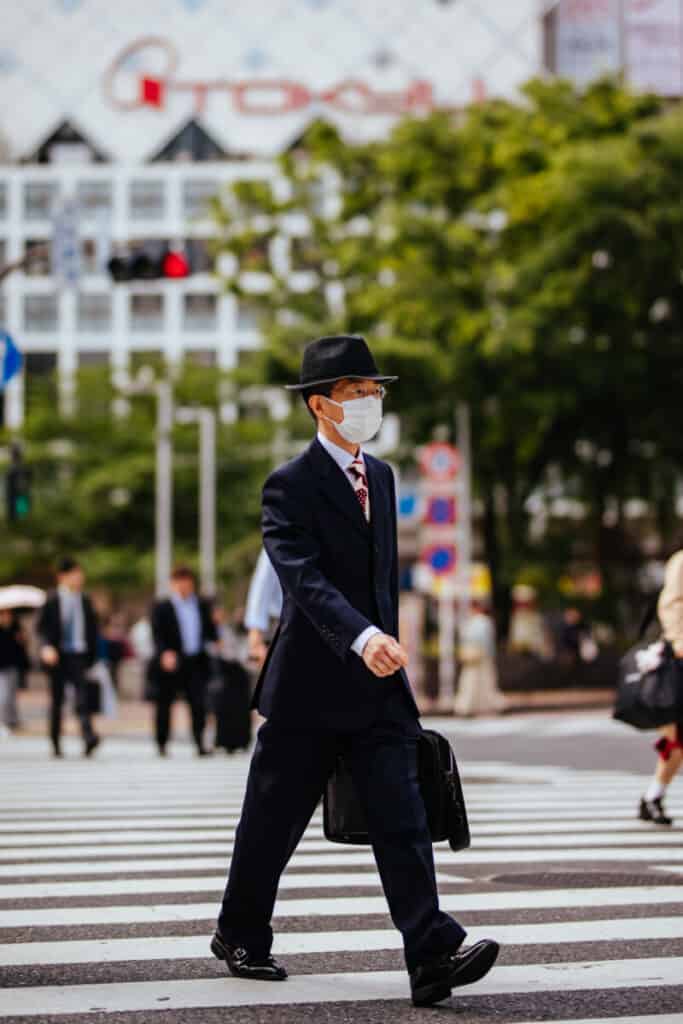
Essential Things to Consider on the Day of Your Business Meeting in Japan
Prepare your presentation.
How you introduce your organization is another critical component of your presentation. Japan is mostly a paper-based work culture.
Invest some time and money into the Japanese translation of your project, as selling a concept in the local language of individuals you wish to consider is always simpler.
Prepare to arrive 10 minutes early.
Being on time in Japan equates to being late. As a result, it’s critical to arrive a few minutes early for each business meeting.
Be prepared with transportation to your meeting beforehand.
Ensure you know your meeting location before you leave, especially if your appointment is during peak times, as you could have to deal with crowded trains during rush hour.
If you opt to take a taxi, make sure you have the address printed in Japanese, as an English-speaking driver may not be available.
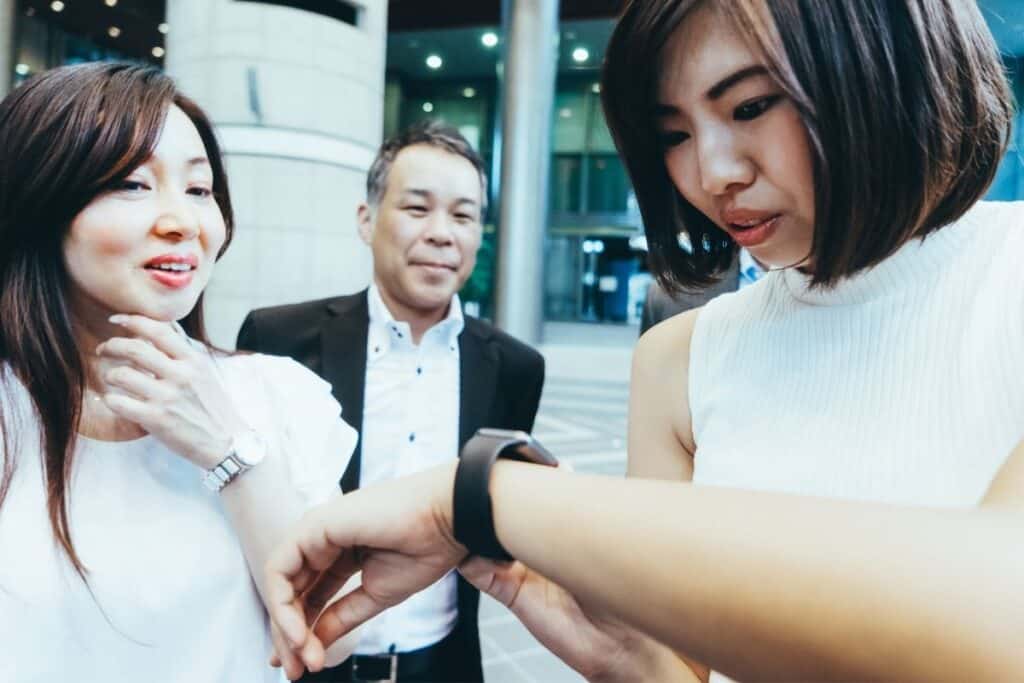
Is Facebook the next LinkedIn in Japan?
Since LinkedIn is not extensively utilized in Japan, you may be asked to connect using Facebook. However, modify the privacy settings on any personal information to avoid humiliation if you begin receiving friend requests.
Addressing People Correctly in Japanese
In Japan, you should address individuals by their last name followed by san, as in Kimura-san. Alternatively, you might use the suffix sama, which expresses a high degree of respect.
When Working with a Team, Plan your Roles Ahead of Time.
If you’re working as a team that will all, be attending the business meeting, ensure you specify all duties ahead of time. Avoid conversations or responses that could indicate even minor disputes or divergent points of view.
Everyone designated as a speaker by the team should be the only one who approaches topics and be able to be extremely clear and exact about their role.

Your Pitch’s Timing is Essential.
It may be helpful to have a few terms or concepts previously translated into Japanese to ensure you don’t waste too much time attempting to explain your pitch.
Any visual depiction of your pitch will also make a positive impression, explain things, and save time.
Trim Down your Presentation to Ensure it does not get Lost in Translation.
Always include the time required for translations, interpretations, additional explanations, and inquiries. If your meeting is scheduled to run an hour, think about how you can cut it in half if you discover that interpretation is taking longer than expected.
The Importance of Group Solidarity in Japan cannot be Overstated.
While we highly emphasize individual accomplishments and believe firmly in personal acknowledgment and appreciation, Japan is the opposite.
Isolating one person in the group for praise will cause embarrassment. Remember that the Japanese value teamwork and aim to provide credit to the entire team.
Things to Consider Once your Business Meeting in Japan is Over
Remember, when the meeting is over, the actual work starts.
When a conference in Japan ends, the meeting continues. Businessmen and women in Japan use this method of connecting with a person rather than a business partner.
Discussions can continue in local izakaya (bars) or restaurants where food and drink are abundant.

Get some karaoke practice.
Karaoke is one of Japan’s favorite hobbies after dinner and drinks. Even if you’re nervous on stage, remember that it’s all about unwinding and uniting with your fellow performers and potential business associates.
Follow up.
It’s always good to send a follow-up message to your potential business partners you met the previous day. This message can be professional.
However, it is advised to focus on the time spent together. Thank them for their time and for paying attention to your proposal.

Remember that privacy is valued.
In Japan, privacy is essential. Remember that while following up on business ideas is essential, it’s not a good idea to upset a possible future partner repeatedly.
Set aside some time for yourself to enjoy your trip.
Once all your business meetings are complete, don’t forget to take some time to unwind and take in the sights of Japan.
You will undoubtedly be provided with a greater understanding of the people, the nation, and the country’s business procedures.










